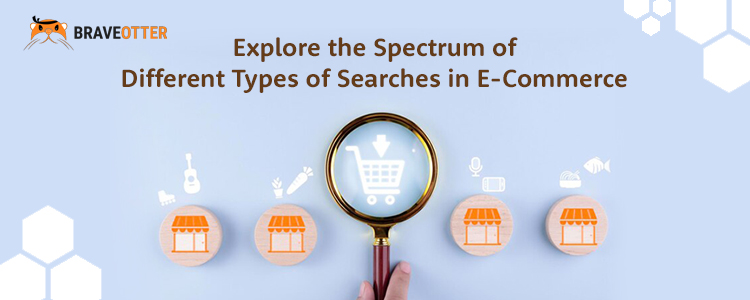Discover Various E-Commerce Search Types and Their Benefits

Nowadays, shopping is not simply about a visit to a store – it is an event, and search as a feature in eCommerce is at its core. When looking for something in particular or even if you are just browsing, the search bar is your ticket to getting what you are aiming at. But what you may not realize is that there are actually several distinct e-commerce search types that underlie your online shopping activity. So, it is high time we tune into the world of e-commerce search and see how each type is equipped with a specific purpose of giving you the results for which you are searching.
1. Semantic Search:
Semantic Search is a more refined type of search that looks for a better way of enhancing the precision of a search by pointing to the relational meaning of those coming along with the search terms.
Use in eCommerce:
From the perspective of eCommerce, semantic search enables users to look for products even when they do not use the keys that match the descriptions of those products. For example, if a user performs a search with the keywords ‘comfortable chairs for office’, a result would be given for ergonomically designed office chairs even when the word ‘comfortable’ is not mentioned in the product title.
Benefits:
Interacts favorably with the user and makes them happy by presenting them with more accurate data, saves time, and may also improve the probability of more sales.
Learn more about e-commerce search strategies on BraveOtter
2. Vector & Semantic Search:
This forms a union of semantic search and approximate nearest neighbors where both view queries and documents in a vector or numeric form in an n-dimensional space. The search then goes on to seek similar vectors to the query vector and most often the associated vectors are the most semantically related.
Use in eCommerce:
Recommendation systems can be based on vector search in order to propose other products that are similar, for example, to what the user is browsing at the moment or what he/she is searching for.
Benefits:
Delivers consumers with closely related search outcomes and suggestions increasing the shopping experience and tailored consumer engagement and sales.
3. Federated Search:
Implies a capability of simultaneously making an inquiry into several databases or indexes and of consolidating the received sets into one list.
Use in eCommerce:
Sometimes federated search can search within the different categories such as; products, blog articles, frequently asked questions, and reviews at once. For instance, a search on the term ‘running shoes’ could yield product listings, associated news articles, and customer feedback in a single window.
Benefits:
This serves the user more time for it combines results from other sources bringing out a better search experience.
4. Voice Search:
This is basically a system that listens to your request and figures out what you are looking for, and shows you relevant results.
Uses in eCommerce:
It helps users to simply speak and search for products in seconds which will make users search for more products. Using voice search, users can discover new products and categories based on the things they say.
Benefits:
Fast searches, Improved Accessibility, Natural Language Queries, Product Discovery, Personalized Recommendations, etc.
5. Geo Search:
Geo Search is the process of integrating geographical data into the search to give location results.
Use in eCommerce:
As such, geo search is ideal for enterprises with premises, or services that are location-dependent. It also provides the possibility of searching for a given product or a particular service within the region. For example, if a person typed ‘grocery stores near me’, it would then display the stores that are within a given distance.
Benefits:
Enhances the local shopping experience, supports localized marketing campaigns, and encourages shoppers to visit actual stores.
6. Long-tail Search:
Refers to a search in which the system focuses on a very specific word rather than searching for a long keyword or generic term. For example, you’re looking for a very specific item like “handmade wooden toy trucks for toddlers.” Instead of searching for something broad like “toys,” which could give you millions of results, you’re using a long-tail search because you’re being very specific.
Uses In E-commerce:
Long-tail searches allow online retailers to find and display products that match what specific customers are looking for.
Benefits:
There’s less competition for specific keywords, so your store has a better chance of being seen. It helps meet the needs of customers who want unique or niche products, making them more satisfied with their shopping experience.
By incorporating these search types into your e-commerce strategy, you can significantly enhance the shopping experience for your customers, making it easier for them to find exactly what they’re looking for. For more insights into optimizing your e-commerce platform, visit BraveOtter.

